John Maher: Hi, I’m John Maher. I’m here today with Ben Adner, founder and CEO of Inkcups, a leading supplier and manufacturer of industrial inkjet printing equipment, pad printing equipment, inks and accessories. Today we’re talking about digital cylinder printing and technology. Welcome, Ben.
Ben Adner: Hey John, how are you doing?
John: Good thanks.
Ben: Glad to be here. Psyched to talk about this new technology we’re doing really well with.
What is Digital Cylinder Printing?
John: Right. So let’s start at the beginning Ben. What is digital cylinder printing? What do you mean by that?
Ben: Well, you may be familiar with traditional digital printing, which may be printing paper. In our case, we’re doing a lot of flat products or three-dimensional products where you’ve got an inkjet head just going over a flat product. In this case, we’ve figured out ways to have inkjet dropped on a cylinder which is as you might expect, much more complex. And what makes it even more complex, they’re not just straight cylinders. In many cases, they’re tapered products.
John: Right. Where you’ve got it, it’s very narrow at the top and wider at the bottom or things like that. So you need to try to keep the product itself, and at the same distance away from the printhead. Is that the trick?
Ben: Right. That’s definitely the trick. The drinkware market is super hot right now. And you may think of a YETI container you may drink out of, that’s typically tapered and the trick is to be able to position it flat to the printhead. So all the printhead sees is a flat item and then also be able to drop inkjet drops around the cylinder in the right location on a taper, where the math is incredibly complex.
Products for Digital Cylinder Printing
John: Right. So you mentioned a YETI drinkware type of thing. What other types of products can you digitally print on that are cylinder shaped? Like the …
Ben: There are things you might be familiar with would be drinkware, traditional, it could be stainless, it could be powder coat, you see a lot of that out there. It could be a plastic squeeze bottle like a bike bottle, and it could be a household container, like a candle jar. And also new evolving markets would be beer cans for the craft brew market-
John: Right, that has gotten very fancy lately.
Ben: Yeah the craft brew market’s extremely hot and also spirit bottles could be from your custom made gin bottles or scotch bottles or vodka.
Benefits of Digital Printing on Cylinders
John: Okay, so there have been typically some other types of processes that will print on cylinders like this. What are the benefits of digital printing versus another technology like screen printing for this?
Ben: Right. Screen printing has been the industry standard for cylinders and tapers forever and it’s a very good process. It can be a high speed process. It can go into production very easily. Where digital cylinder printing comes in is when you want to go to shorter runs and multi-color. Where you can actually go with digital cylinder printing from printing one off. That could be for an internet retailer, but so you can print your face or name or your dog on there, to short run, which we consider up to, anything up to maybe 5,000 pieces with multi-color. With screen printing you’ve got set up the screens, you have to color match the ink, you’ve got to register the colors. So where inkjet really begins to shine is when it’s two colors or more I would say. One color, it’s probably 50/50 whether or not you want to go digital, certainly two colors or more on any cylinders are a great way to go.
John: Because when you’re doing something like screen printing, you have to print one color and then put it back in, do a different color, put it back in, do a third color. And so you’re constantly using, putting the same products in over and over just to get these multiple layers of different colors.
Ben: That’s a great explanation. Right, so if you’re running 100,000 pieces, you got that one time setup and that setup could take you five or six hours. But imagine trying to do that setup for 50 pieces. It’s just very impractical.
John: Right.
Ben: So in this day and age with inventory where people are trying to reduce their inventory, so therefore the order counts are down. And people just, it’s an on demand society. People want what they want when they want it and digital is a perfect solution for it.
Types of UV Cylindrical Printer Technology
John: Okay. So what types of UV cylindrical printer technology are there and what are the benefits of each of them?
Ben: I guess in terms of the technology, I would say that there are three different types of ways that people are doing it now. One is an indexing method, which is a really, it’s a very, very slow method where you’re actually putting what we call hot dog rollers on a flatbed and the table moves and the part indexes piece by piece by piece. It’s a very slow technology. I would not even consider that production of any sort.
John: So when you say a hot dog roller, you mean like when you go into one of those convenient stores and you see those little hot dogs rolling around, they’ve been there for hours and hours and hours where they’re rolling around. It’s that kind of thing.
Ben: That’s exactly the way it goes, right? The hot dog roller. Then there’s the method that we’ve employed, which is helical printing, which is where the head stays stationary and the product moves by the head. And therefore the inkjet drops have to actually drop on the cylinder almost in the shape of a barber pole. It’s a helix. And the benefit to that is, because it’s a lot of benefits, but the two primary benefits is that you can print images that are very tall, taller than the width of the print head, which is typically two or three inches. And you can print anything eight inches, because you’re just moving the product by it. And then the second thing is you’re able to interlace the drops or the inkjet drops along the way in the barber pole, so you cover up for any missing nozzles. You get very high quality print. It’s a very slick technology. It’s actually patented technology. So we’ve embraced it and that’s what we use in all of our equipment.
John: So you’re starting from like say the top of the product, going around in a circle, 360 degrees. And then it’s like sort of moving down onto the second line and you’re printing that 360 degrees and then it gradually goes from the top of the bottle down to the bottom.
Ben: Right. Just like a barber pole-
John: Okay.
Ben: … that spiral around the, that’s the way the-
John: Interesting.
Ben: And then it’s not only just one color, it’s CMYK, whites, clears, varnishes. So you’ve got-
John: Just like you’re printing an image off your inkjet printer at home?
Ben: Right. But spinning it.
John: But spinning it around.
Ben: Spinning it and moving it. Yeah. So it’s very sophisticated technology in terms of the equipment, but it’s easy to run, and it’s image quality is amazing.
John: Okay. And then what’s the third type of digital printing?
Ben: The third type is, I would call it single pass printing. So single pass, you basically the part is stationary and the head is stationary in the way you achieve high speeds as you put multiple heads in line with the part. So for example, you’ve got a five inch, want to print on a beer can let’s say. So you’d have to have two heads for cyan, two heads for magenta, two heads for black, and you’d be able to spin it right in front of it. Each station has one and you’d spin the part right in front of each station. It’s incredibly fast. It’s very fast because you’re not wasting any time moving the part. It’s a fast technology and its issues with it. I would say the benefit is that it’s fast.The issues with it would say it’s very expensive and you’ve got so many printheads to manage. And then thirdly, image quality can be an issue because if you’re missing one nozzle out of 300 on each printhead, you can see a stripe in the print. You can literally see where it didn’t print because there’s nothing there.
John Maher: Right.
Ben: So in my view, the single pass printing is more for industrial applications where the image quality is not as important. Helical is when you want to get less expensive equipment with high quality imaging and then the hot dog rollers for the convenience store.
Further reading: What is rotary printing?
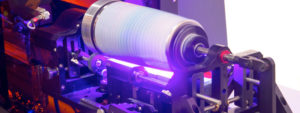
Considerations for Digital Cylinder Printing
John: Okay. So what are some of the things that you should consider when you’re choosing a cylindrical inkjet printer?
Ben: First this comes down, the usual questions we ask would be, “What’s your on size? How many parts do you want to print a year? Are they single or multi color? And how often do you need to change over?” Right? So if I answered that, “Listen, I’ve got one part I need to produce 10 million a year,” that’s a great application for a single pass machine. You don’t have to change it over. Image quality is not that important. Just build a dedicated machine and off you go and you’re going to crank very high image quality on a number of different parts.However, if you said to me, “Listen, we’ve got run sizes of a 1,000 pieces or 500 pieces, we need to be able to change over frequently.” I think that would be a great application for the helical technology that we use. One is the X360 which does one part per minute. We’ve got the Helix® which offers four parts per minute. And we’ve got a new machine we just launched called The Revolution®, which does ten parts per minute. So we’ve got the opportunities and equipment for different customers. A startup customer who wants an X360, someone who’s already an industrial printer would typically go for the Helix®, The Revolution®.
John: Yeah. So it sounds like it’s a good idea to, if you’re interested in digital cylinder printing, to talk to you guys in terms of … And talk about types of products you are printing on. Are you potentially printing on lots of different types of products and shapes? How big are your runs? Whether you’re just doing lots of short runs or you need longer runs or a mix of those perhaps? There’s lots of things like that that factor into. In addition, there’s the image quality. Like you said, how quickly it needs to be done. Lots of factors. And you guys can do a lot in terms of helping people to decide what type of product then?
Ben: Right. And a couple of other very important factors when choosing equipment. One is adhesion, right? So what are your adhesion criteria? Is it just a scratch and cross hatch? Do we need to do the dishwasher? Is it industrial dishwasher or residential? Typically for a residential it would be over 50 washes. For industrial, maybe 600. Some people may need over a 100 residentials and a 1,000 industrials. So we’ve got a number of solutions for-
John: Those are different types of testing.
Ben: Sorry, the testing criteria for it. And then we’ve got those drinkware. I will tell you that we’ve spent the last four years doing nothing but adhesion testing. We’ve developed solutions for powder coat, we’ve got paint, we’ve got stainless, we’ve got polypropylene, we’ve got polyethylene, we’ve got, the glass is an amazingly difficult solution. Over the years we’ve developed inks and solutions for all of those substrates, and it really helps separate us on the marketplace.
John: And depending on what types of substrates you’re doing, or if you have a mix of them that might help determine what type of machine you need as well?
Ben: Yeah, absolutely. And it’s a machine and application, right? So some machines may have, you may need a corona or plasma pre-treatment for a plastic bottle. So in that case, the Helix®, or The Revolution® is the only machine that can do that. When you get to the startup machines they can’t be integrated with pre-treatment in them. So pre-treatment is a major consideration when you’re buying equipment. Am I going to manually wipe it, or am I going to want to integrate it into the machine?
John: All right. That’s really great information Ben. Thanks again for speaking with me today.
Ben: My pleasure.
John: And for more information about Inkcups and Inkcups printing equipment, visit the website at inkcups.com or call (978) 646-8980.
Learn more about Inkcups’ line-up of digital cylinder printers:
Revolution® high-speed digital cylinder printer
Helix® digital cylinder printer
Helix® Hi-Fi Photorealistic rotary UV printer
X360 industrial inkjet UV printer for cylinders – Please note that the X360 has been discontinued. To find our complete lineup of cylindrical inkjet printers please visit: Cylindrical Inkjet Printers
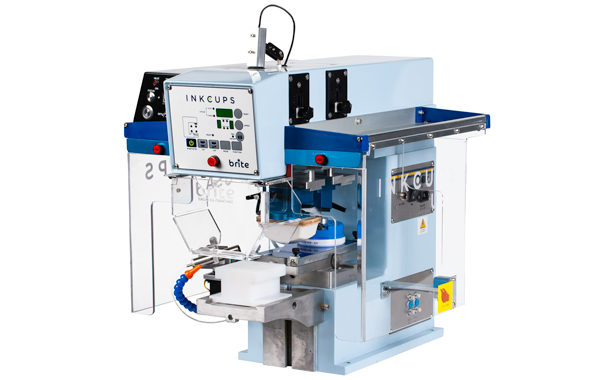 Tagless Printers
Tagless Printers Cylindrical Inkjet Printers
Cylindrical Inkjet Printers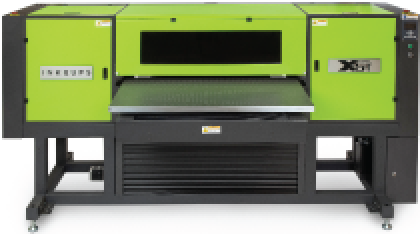 UV Flatbed Printers
UV Flatbed Printers Pad Printing Machines
Pad Printing Machines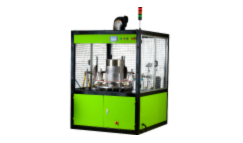 Pretreatment Systems
Pretreatment Systems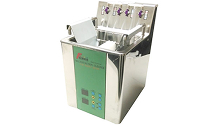 Inkjet Printing Auxiliary
Inkjet Printing Auxiliary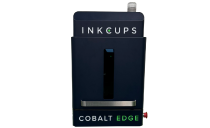 Laser Plate-Makers
Laser Plate-Makers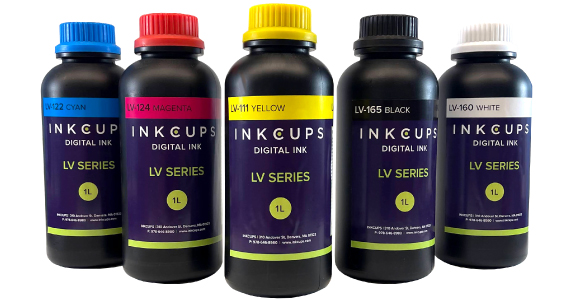 Inkjet Printing Supplies
Inkjet Printing Supplies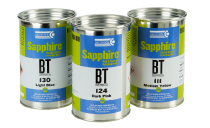 Pad Printing Supplies
Pad Printing Supplies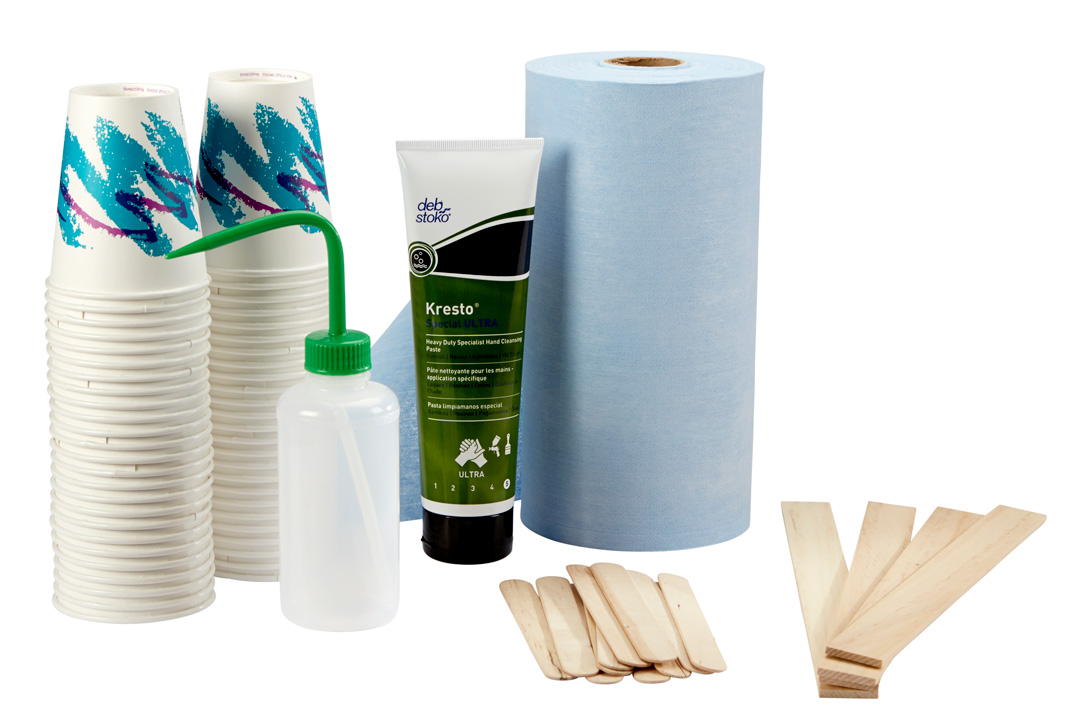 Tagless Supplies (tagless.inkcups.com)
Tagless Supplies (tagless.inkcups.com)

Add Your Comment